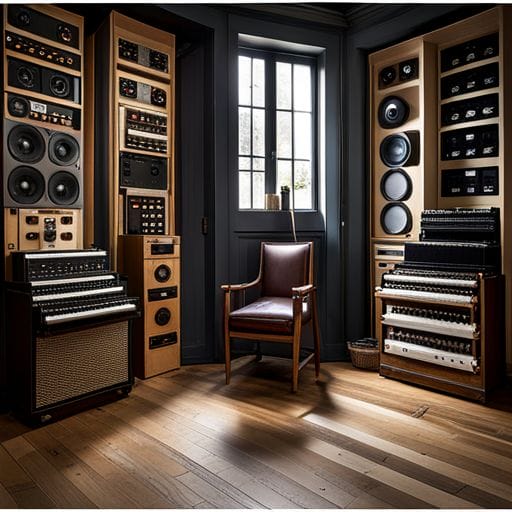The History of the 1176 Compressor: Revisions A to H

Which of the revisions A to H of the 1176 Compressor had the most significant impact on its functionality?
Since its inception in the early 1960s, the 1176 Compressor has played an integral part in the world of sound engineering and music production. Initially produced by UREI (United Recording Electronics Industries), the 1176 is famed for its quintessential FET (Field-Effect Transistor) character.
Designed by Bill Putnam Sr., a renowned recording engineer and the founder of UREI, the 1176 garnered recognition for being the first true peak limiter with all solid-state circuitry, offering major advantages in terms of reliability, stability and ease of use.
Revision A: The Original
The Revision A, or the ‘Bluestripe’ 1176, was the original design by Bill Putnam Sr. Launched in 1967, only about 100 units were produced. The most apparent distinguishing factor was the blue strip across its meter where its name was displayed. Known to have a brighter and aggressive character, the bluestripe is revered for its ability to add color and depth to music.
Revision B and C: Refining the Concept
Revision B didn’t last very long, but it was here that one of the most iconic features of the 1176 was introduced – the LN (Low Noise) circuit. Very soon, in 1968-1970, Revision C was introduced. This was also known as the 1176LN and was the one which truly set the standard for all future revisions. The Bluestripe was replaced with a black faceplate and the noise floor was improved.
Revision D: Cosmetic Changes
Revision D saw only minor updates, mainly cosmetic changes, such as replacing the meter with a modern design, and introducing a new pushbutton-switch.
Revision E: The ‘Blackface’
Revision E, or the ‘Blackface’ was where the 1176 started looking like the unit we know today. Manufactured until 1973, it had improved stability over temperature shifts and also an efficient power supply.
Revision F: Introducing the Brad Plunkett-designed circuit
Brad Plunkett, the inventor of the Phase Linear Series, joined the UREI team and was instrumental in manifesting the 1176 to a large-scale design. The modification that stands out from this revision is the addition of the output transformer, otherwise known as the class-A line output stage.
Revision G: Path to Modernization
This revision was produced for around 5 years and is the model most people think of when they envision the black-face 1176LN. The major modification in this revision was the addition of a bypass switch on the front panel, which was quite a modern forward move.
Revision H: The Silverface
Rounding off UREI’s tenure with the 1176 was the Revision H, or the ‘Silverface’, which is considered as more of an aesthetic change than a functional one. It introduced a new silver panel with blue lettering, and the iconic UREI logo was replaced by the UREI/teletronix logo.
From being used in large scale recording studios to producing iconic sounds over the decades, the evolution of the 1176 compressor indeed marks an important milestone in the history of audio engineering.
